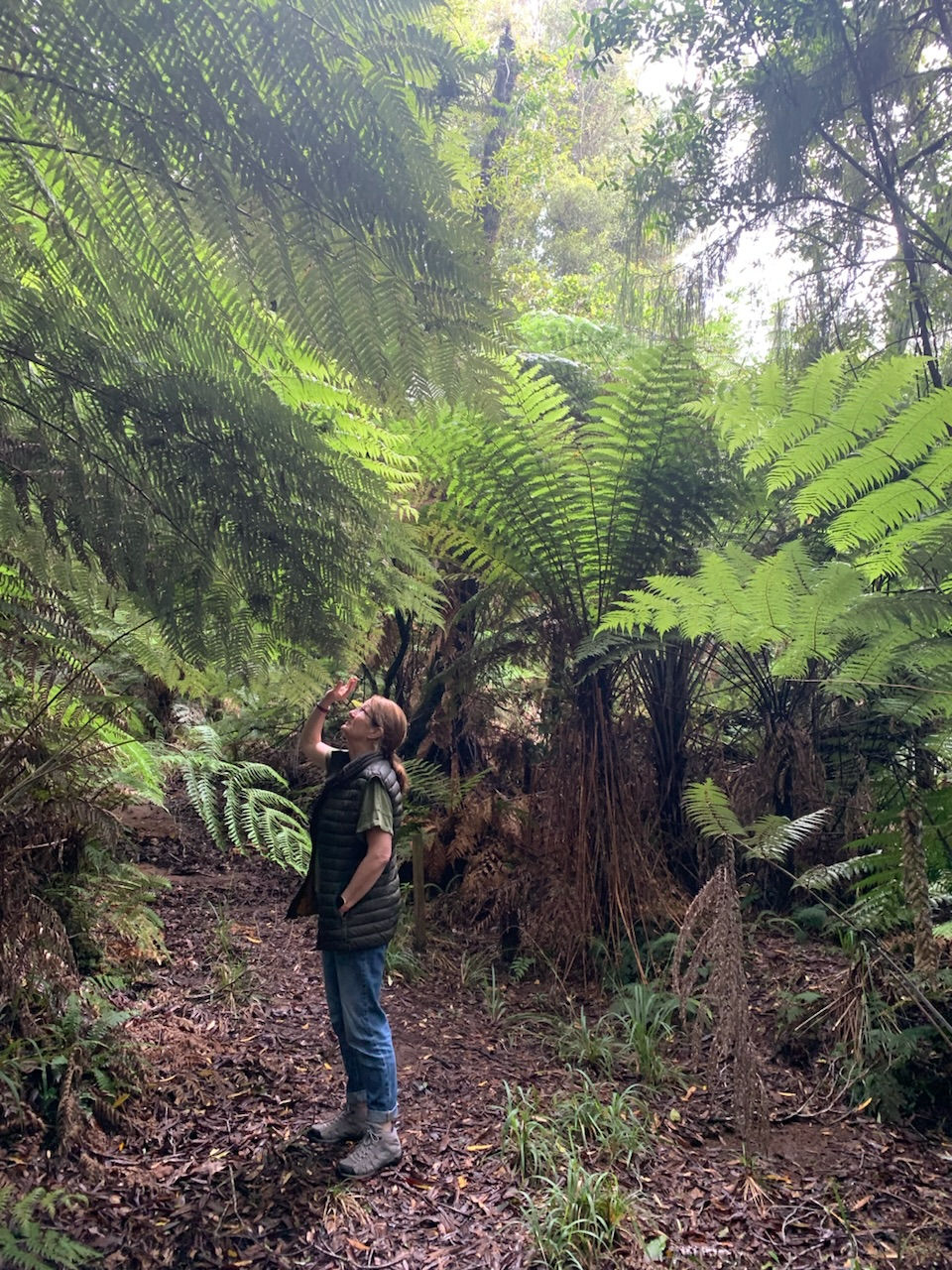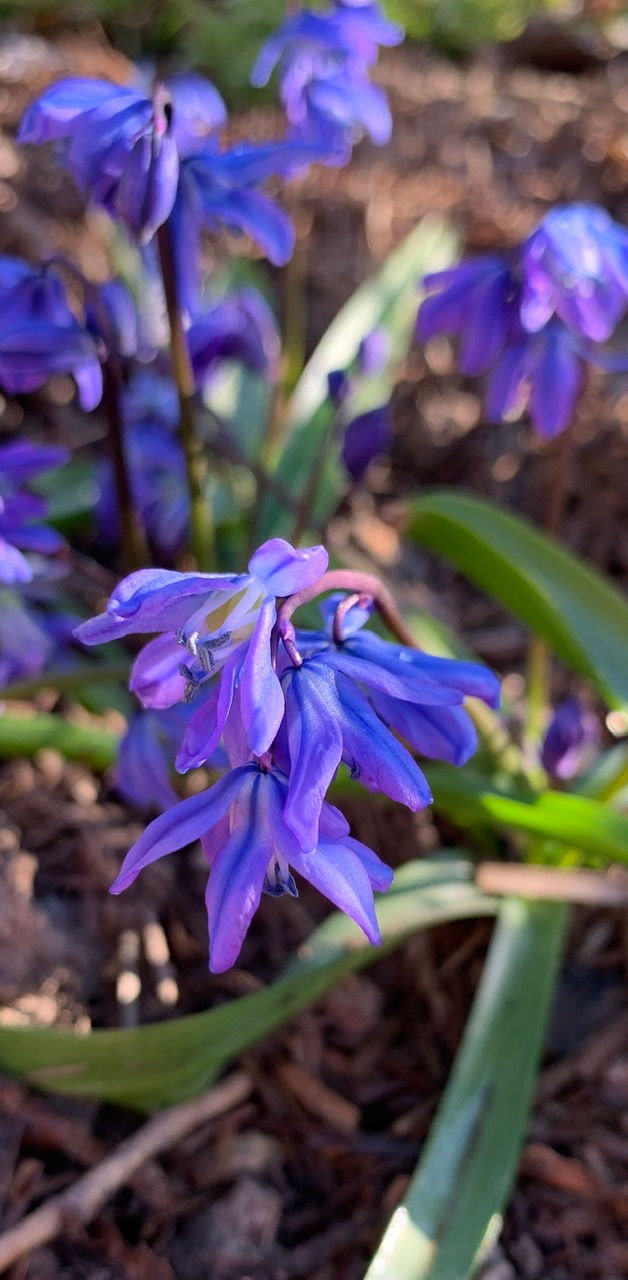Hawk-Moth Rises !
- Neil

- Jun 7, 2023
- 6 min read
I don't think I have ever seen a more enigmatic Moth. Don't worry he is coming Gandalf.

I set the trap again last night expecting to find a couple of small Moths in the morning. Note to self - clear the calendar the next day if you are going to set a moth trap at Oaklands. I seem to have created a zoo overnight, unlicensed and run by an amateur.
I set the trap further down the garden having read that it is best to keep a distance of at least 50 m between trapping sites and to leave it 2 days to avoid catching the same individuals over and over. Fair enough. It was 3 days and about 30 m. At the full extension of my cables I could reach to the bottom of the straight path at the end of "Heritage Avenue" (the espalier Apple row) just before the rough meadow and the Walnut trees. It seemed suitable habitat and I had my eye on the local honeysuckle.
Walking down the path at about 8 a.m. without my glasses on my first thought was that a small bird was perched on the top of the trap. As it came into focus I then thought a miniature version of the Bat Plane had landed. Whatever it was it was sat there as bold as brass bathing itself in the eery purple light of the trap.

I have seen a few Hawk-moths in Dubai - well two not to exaggerate - so I was prepared for the size and beauty of the things but in England in your back garden ? Granted we have an acre of rough ground and a couple of acres of wood as the hinterland of our home but still, you do not expect such magnificent species to be lurking in the undergrowth. I was entirely ignorant of how these moths go about their business. The irony is that yesterday I was telling a story against Jane and I in a post in respect of knocking down a small out-building which housed a large overgrown honeysuckle. We had seen a Hummingbird Hawk-moth visit one afternoon .(Macroglossum tityus - the Macroglossum means large tongue). Well Jane replanted two honeysuckles along the long brick wall between us and the Manor House walled garden and some of the cottages next door. Perhaps these are paying dividends ? My theory that you need a darker overcast night has proven true as well. So who do we have ?
The Hawk-moth family are the Sphingidae. There are nine species resident in the British Isles with eight other occurring as immigrants. Don't tell the Tories. Hawkmoths are described as "impressive" and "strikingly coloured" in my field guide. The family description goes on to describe them as resembling "jet fighters". Strap in Moth Mavericks. Not one but two species had decided to reveal themselves last night.
The Poplar Hawk-moth - Laothoe populi

The biggest moth by the looks of it in the field guide - I have large hands. This would fill a squealing child's palm before they calmed down ! The chestnut patches on the underwing are diagnostic. We need a bigger pot ! This specimen had an early release at the base of some scruffy garden plants.

The species description for these indicates that their Larval food plants are Aspen, White Poplar, Black Poplar and Lombardy Poplar but also sallows and willows, particularly Goat Willow and Grey Willow. Now - we do have Goat Willow on the property and I remember that one was taken to task around the front pond for getting a bit unruly. Note to selves - plant more Goat Willows ! These Moths should then be with us from May to July each year as long as we do the right things.
The good news - these are not rare moths ! These are resident and common - "The most widely distributed and frequent hawkmoth in the British Isles". They are recorded all around the British Isles. Well it took me until I was fifty-four to see one and I had to set about trapping it ! What an exquisite creature... what tops that ?
Elephant Hawk-moth - Deilephila elepnor

Jet fighter indeed and yes it is olive and pink ! Not just any pink - the kind of fluorescent pink you find on bad lycra kit from the last century ! It even has a broad lurid pink dotted line down its truncated abdomen. Just why ? and well just wow !

The field guide describes this as "unmistakable. This is the equivalent of the best parrot from a South American field guide to birds. I guess it is beginners luck. We did however leave the meadow area to its own devices in May and we did plant honeysuckle. This creature feeds on honeysuckle from dusk using its long tongue. The larva like Rosebay Willowherb, Great Willowherb and other willow herbs and bedstraws. Both of us have been scattering wild seed with abandon for the last few years and I know that right on the corner of the path opposite where we set the trap Jane sowed a mix and there and again all along the rough bank where I played wild flower farmer on the other side of the meadow there is a fair amount of Lady's Bedstraw (Or is it Ladies' Bedstraw ?). Well that seems to be a recipe for these incredible Moths - Lady's Bedstraw and Honeysuckle. Another key attractant could be the Rosebay Willowherb about the place. They are described as favouring rough or disturbed or burnt ground where Rosebay Willowherb has colonised. There are several big bonfire circles in the area which have been colonised in this manner. Again these Moths are resident and common and well distributed throughout England and Wales. More good news !
The night's haul continued. Moths crawling out of the indentations in the egg boxes like so many sleepy Tokyo pod hotel residents.
White Ermine - Spilomosa lubricipedia

This is a favourite of Janes - one having blundered into the conservatory window one evening. This beauty will use a wide variety of herbaceous plants in its larval stage including nettles and docks which we have in abundance. Another common moth but adorned with an aristocratic name recalling the Winter coat of a stoat used in the fur lining of a Lord's robes.
Large Yellow Underwing Noctua pronuba
I saw it flap so you will have to take my word for it. The underwings are yellow/orange with a thick black border. You can see the underwing if you look closely in the picture below. The underwing could have been drawn with felt tipped pens. The markings down the leading wing edge and the general pattern seem to marry up. These are common and ubiquitous with the confusion species in the book being "scarce". In other words it's far more likely to be one of these than the similar looking other Moths in the book. They love foxgloves at the larval stage so they can fill their boots in our wood ! You can apparently trap thousands in a night in the right habitat.

This then is probably a bench-mark species to count.

I am honestly not making this up...
Setaceous Hebrew Character - Xestia c-nigrum

The bright straw colour botch extending centrally to the leading edge of the forewing is diagnostic. So this is a member of the pioneer generation in May-July which will then create a far larger generation later in the Summer. There is a debate in my field guide about the level of cross channel immigration for this species contributing to the second generation. I had to do a double take when reading this and again don't tell the Tories. The argument runs that the first generation could never father the sheer numbers that appear in July/August. Alternatively it may be that large numbers die off over the Winter leading to the smaller first generation. Either way these again like nettles and willow herbs when they are caterpillars. It goes without saying that they are most welcome at Oaklands whatever their provenance and can stay as long as they want and father how ever many generations they want.
Britain is one of the most nature depleted countries in Europe. That is no joke.
I think there may be more in the box as I sit here pouring over my field guides and collecting pots but it is close to lunchtime and I need to do something other than blog about Moths today. Thankfully the recommendation is that you wait a couple of days before repeating the process ! Either way two traps in five days have uncovered six species. Not exactly a blitz but the Moth offensive has started.
I can't leave this blog without posting up a picture of Elvis as I have now named him. This is Oaklands newest resident. A juvenile Tawny Owl who is out-cuting even the Elephant Hawk-moths. He would probably snack on one now given half a chance if I come to think about it. Elvis was having a troublesome time with the Jays yesterday mobbing him in the wood while I was clearing Laurel so was easily found and snapped. June is a good time to be at home. Oaklands is dripping with life.




Comments